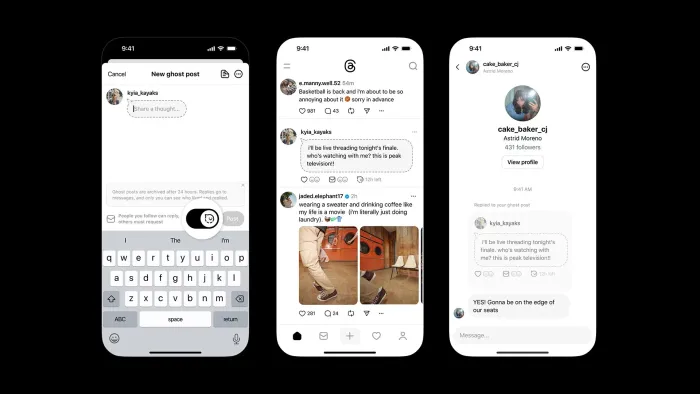
.
Image: Meta
Meta’s Threads app is leaning into impermanence.
Starting Monday, the platform is rolling out “ghost posts,” a new post format for sharing fleeting thoughts that automatically disappear after 24 hours. Think Snapchat or Instagram Stories—except, for text.
Unlike regular Threads posts, replies to ghost posts go straight to the user’s messaging inbox rather than inline, and only the author will be able to see who liked or responded to them. It’s a subtle but significant shift toward private engagement within a public feed, providing a middle ground of sorts between Twitter’s public discourse model and Instagram’s close-friends Stories.
Meta says the feature is aimed at reducing the “pressure of permanence” and sparking more spontaneous conversation.
Subscribe to the Daily newsletter.Fast Company's trending stories delivered to you every daySIGN UPPrivacy Policy
|
If this sounds familiar, it’s because social media has been flirting with ephemerality for years. Snapchat built an empire on vanishing messages, and Instagram Stories borrowed the format and made it mainstream. Even X (formerly Twitter) experimented with “Fleets,” its own 24-hour post format, before quietly shelving the feature in 2021 after low engagement.
Threads’ take, however, differs in intent. Rather than mimic Story-style content, ghost posts appear directly in the main feed where conversations actually happen and fade quietly after a day. It’s a move that positions Threads as both reflective of older, text-driven social media, and responsive to users’ increasing desire for less performative spaces.
Ghost posts join a growing list of new Threads features designed to broaden the platform’s creative range.
Over the past few months, Meta has added support for 10,000-character text attachments, and a Spoilers toggle that hides media or text until tapped. Together, the updates seem to position Threads as a kind of “social sandbox,” one where both the long-form essay and the fleeting thought can coexist.
ABOUT THE AUTHOR
Emily Price is a contributing editor for Fast Company’s news section, where she covers business, tech, and culture. She is also the author of Productivity Hacks: 500+ Easy Ways to Accomplish More at Work—That Actually Work!, a guide to working smarter and getting more done without burning out.
FAST COMPANY
